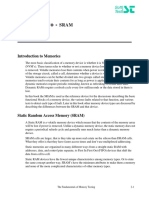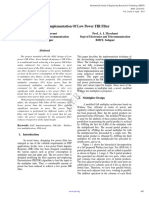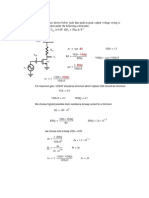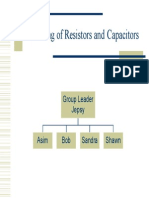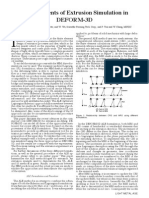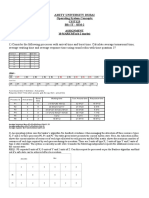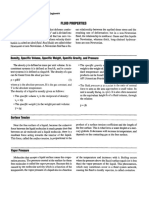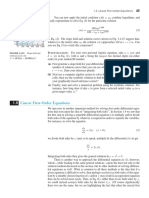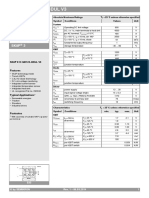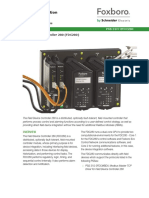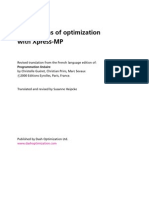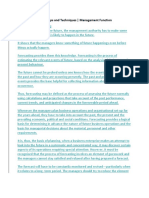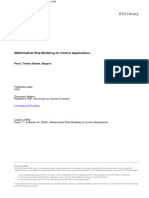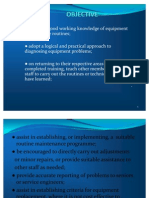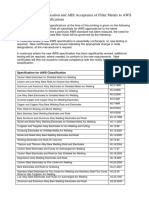Matching of Resistors and Capacitors
Group Leader Jepsy Asim Bob Sandra Shawn
�Measuring Mismatch
w The mismatch between any two devices is expressed as a deviation of the measured device ratio from the intended device ratio. w The mismatch between one specific pair of devices can be calculated as: d = (x1/x2)-(X2/X1) = X1x2 - 1 (X2/X1) X2x1
�Guidelines for Selecting Samples
w The sample should include twenty devices or more. w The sample should include devices drawn from three wafers or more. w The wafers should be selected from various positions in the wafer lot. w The sample devices should be selected from random locations on each wafer. w The sample should include wafers from more than one wafer lot, if possible. w Wafers that have been reworked should not be used for characterization. w The sample should be packaged using the same lead frames and encapsulation as production material.
�Average Mismatch and Standard Deviation
w Based on computed mismatches, an average mismatch, md, can be derived as:
md = 1
N i=1
S di
w After the mean has been computed, the standard deviation of the mismatch can be calculated by: __
sd = ( 1
N-1 i = 1
S (di - md)2 ) 1/2
�Systematic and Random Mismatch
w The mean, md, is a measure of the systematic mismatch between the matched devices. w The standard deviation, sd, is a measure of random mismatch caused by statistical fluctuations in processing conditions or material properties.
�HISTOGRAM
�Causes of Mismatch
w Random Statistical Fluctuations w Process Biases w Pattern Shifts w Diffusion Interactions w Stress Gradients and Package Shifts
�Random Statistical Fluctuations
w Irregularities are found in every component
n
Polysilicon resistor
w All devices fall in one of these two categories:
n n
Peripheral fluctuations Areal fluctuations
�Matched Capacitors
w Random mismatch due to peripheral and areal fluctuations has a standard deviation: Sc = (C)^ 1 --(ka + kp --- )^
(C)^
w Large Capacitors
n
Areal term dominates and the random mismatch becomes inversely proportional to the square root of capacitance.
�Matched Capacitors
w Small Capacitors
n n
Dominates matching capacitors of different values. Example: 5pF matches a 50pF capacitor as well as it matches another 5pF capacitor.
�Matched Resistors
w The random mismatch between a pair of matched resistors has a standard deviation of: 1 SR = (W)(R)^ --(ka + kp --- )^ W
�Widths of Matched Resistors
w Extreme case where areal fluctuations dominate over peripheral fluctuations:
1 )^ W2 = W 1 ( R ---
R2
w Extreme case where peripheral fluctuations dominate over areal fluctuations:
1 )^1/3 --W2 = W 1 ( R
R2
�WHAT IS PROCESS BIAS?
w The dimensions of geometries fabricated in silicon never exactly match those in the layout database because the geometries shrink or expand during photolithography, etching, diffusion and implantation. w The difference between the drawn width of a geometry and its actual measured width constitutes the term process bias.
�PROCESS BIAS
w Next we study the implementation of such principles with passive devices (such as Resistors & Capacitors).
�Resistors
w Polysilicon resistors using a silicide block exhibit high linearity,low capacitance to the substrate, and relatively small mismatches. w The linearity of these resistors in fact much depends on their length & width, necessitating accurate measurement and modeling for high precision applications.
�Resistors
w Suppose 2 matched poly resistors having widths 2um and 4 um will have a process bias of 0.1um. This represents a systematic mismatch of no less than 2.4 %(0.512um). w If one matched resistors length is of 5um and other is 3um displays a typical mismatch on the order of 0.2%. w Approximately most processing biases should be of at least 0.1um. w But if the resistors of the above example were laid out in 20um segments then the ratio would be around 0.5um.
�w For large values, resistors are usually decomposed into sorter units that are mapped out in parallel and connected in series.
w From the viewpoint of matching this layout is preferable, where the corners contribute significant resistance.
�w When very accurate ratios are required (in integer values) this layout can be applied.
�CAPACITORS
w They also experience systematic mismatches caused by process bias.(mostly by over etching).
w 2 poly poly capacitors, one 10x10um other 10x20um, after etching the bias is of 0.1um. The ratio of the 2 areas equal 0.5029 (almost equal to) mismatch of 0.6%.
�CAPACITORS
w Ideally capacitor size often in analog circuits is given by
w Solution to the previous mismatch is to keep their parameter to area ratios same even if capacitors are of different sizes.
�w Identically matched capacitors/unit sized are usually laid out as squares because this reduces their area to periphery ratio, which in turn minimizes the contribution of peripheral fluctuation to their random mismatch. w Larger capacitors/non unit sized are mapped out as rectangles.
w Theoretically these equations eliminate systematic mismatches due to process bias but not in practice.
�CAPACITORS
w Process Bias experienced by rectangular capacitors are different from square ones. w Rectangular capacitors also increase contribution of peripheral fluctuation to random mismatches. w There are other effects like process bias leading to mismatches which are caused by boundary conditions of an object, stress, voltage modulation, dielectric polarization & pattern shifts.
�What is a pattern shifts?
This is another error in matching mechanism due to surface discontinuities on substrates that are frequently displaced laterally during an epitaxial growth.
�PATTERN SHIFTS
w Surface discontinuities left from the thermal annealing of the N-buried layer(NBL) propagate up through the monocrystalline silicone layer deposited during vapor-phase epitaxy. This discontinuous image is called an NBL shadow.
�w Sometimes various edges of discontinuity shift by different amounts causing pattern distortion.
w Occasionally the surface discontinuities completely vanish during the course of epitaxy resulting in pattern washout.
�Factors effecting shifts
w Magnitude of patterns depend on the mobility of absorbed reactants and crystal orientation. w Also high pressure, faster growth rate, presence of chlorine increase pattern shifts. w While high temperature tends to reduce pattern shifts.
�PATTERN SHIFTS
w The NBL shadow is clear in the vicinity of minimum geometry NPN transistors. w It appears as a faint dark line. w Once the shadow is identified , the NBL shift can be estimated by dimensions of contact or narrow resistors. w Pattern shifts becomes potential concern whenever matched devices are laid out in a process that employs a patterned buried layer(such as NBL). w Not all components are reflected by pattern shifts like capacitors & poly resistors. But diffused resistors are usually enclosed in tanks or wells containing NBL.
�PATTERN SHIFTS
�Diffusion Interactions
w Dopants that form a diffusion do not all reside within the boundaries of its junction. w Metallurgical junction where acceptor concentration = donor concentration. w Tail portion of the junction that falls outside of the metallurgical junction.
�Diffusion Interactions
w Tails of two adjacent diffusions will intersect with one another. w Different polarity n Counterdope n Higher sheet resistances n Narrower widths w Same polarity n Diffusions add n Reinforce each other n Lower sheet resistances n Greater widths
�Diffusion Interactions
w To reduce mismatch, we add dummy resistors to either end of the array. w Must have exactly same width as the other resistors. w Should be connected to prevent the formation of floating diffusions.
�Diffusion Interactions
w We can eliminate diffusion interactions without increasing the die area.
�Stress Gradients and Package Shifts
w w w w Piezoresistivity Gradients and Centroids Common-Centroid Layout Location and Orientation
�Stress Gradients and Package Shifts
w Different forms of packing affect the amount of stress. w Packaging for semiconductors
n
Metal
l
header
Plastic
�Stress Gradients and Package Shifts
w Package shifts differences in measurements of electrical parameters before and after packaging. w Power packaging requires an intimate thermal union between the die and its leadframe or its header to minimize heat build up.
�Stress Gradients and Package Shifts
w Low stress mold compounds do not reduce package stress significantly. w A better method involves coating each chip with polyimide resin prior to encapsulation. w Most products use plastic encapsulation with copper alloy headers or leadframes.
�Piezoresistivity
�Gradients and Centroids
w Isobaric contour plot
�Gradients and Centroids
w Stress Gradient the rate of change of the stress intensity. w Smallest at the middle and slowly increases as it reaches the edges.
�Gradients and Centroids
w Matched devices should be as close as possible to one another to reduce stress between them. w Assumption: stress gradient is constant in region. w Stress difference is proportional to the product of the stress gradient and the separation between them.
�Gradients and Centroids
w ds = pccdccdelScc w pcc = piezoresistivity along a line connecting the centroids of the two matched device. w dcc = distance between the centroids w delScc = stress gradient
�Common-Centroid Layout
�Common-Centroid Layout
w 1. Coincidence w 2. Symmetry w 3. Dispersion w 4. Compactness
�Location and Orientation
w Matched device should be where the stress gradients are the lowest. w Best location for matched devices are at the middle of the die. w Larger dice have more stress than smaller ones.
�Location and Orientation
�REFERENCES
w Razavi, Behzad. Design of Analog CMOS Integrated Circuits.New York: McGraw-Hill, 2001. w Johns, David and Ken Martin. Analog Integrated Circuit Design.Canada: John Wiley & Sons, Inc., 1997. w Hastings, Alan. The Art of Analog Layout. New Jersey: Prentice Hall, 2001.






